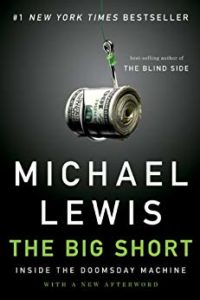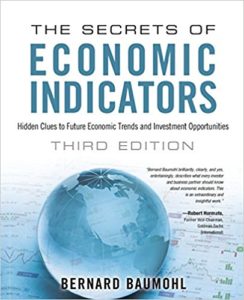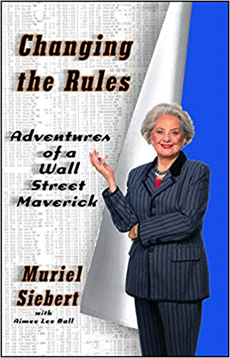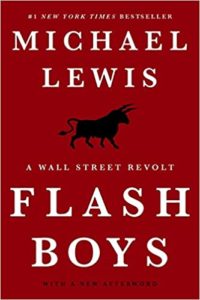The Bookshelf
Finding the right financial advisor is a challenge. What questions should I ask? Will I understand the answers? My guide makes it easy to find the advisor who will be the best fit for you.
With my Guide, you’ll be able to:
- question financial advisors with confidence
- know how to interpret the answers they give you
- understand the fees they’re charging
- be sure you’re choosing the right financial advisor for you
What I love about this updated classic is that Burton G. Malkiel doesn’t mince words. I am reading his book for the third time. It is one of the first books I read when I started investing. Originally published in 1973, it is timeless for anyone who is interested in an honest view of investments and the markets. This isn’t a book you have to read “in order.” You can hop around from chapter to chapter and totally skip the chapter on Technical Analysis.
As I read new and updated sections I have to admit that some of his one liners just make me laugh. He has a zinger sense of humor. In the investment community it is a quality I much admire.
Chapter 4 is called “The Explosive Bubbles of the Early 2000’s”. Just this chapter alone is worth reading.
In it, Professor Malkiel revisits the Internet Bubble. Specifically, some of the crazy ideas that generated millions of dollars for “startups”. He describes one startup called SwapIt (a way to swap your old CD’s for, hey, a new currency called “Swap It Bucks”).
Professor Malkiel says: “SwapIt.com was a fiercely stupid idea.” That’s what I’m talking about.
In his chapter “Three Giant Steps Down Wall Street” there is a section on Investment Advisors.
“If you follow the recommendations in this book carefully, you really don’t need an investment advisor. Unless you have a variety of tax complications or legal issues, you should be able to accomplish the diversification required and do the rebalancing yourself. You might even find that it is fun to be able to take complete charge of your investment program.”
That’s what I’m talking about. Thank you, Burton.
From the authors of “Freakonomics”and “SuperFreakonomics”, “Think Like a Freak” shows you how to challenge “conventional wisdom.”
This book resonates with me because challenging conventional wisdom could be your biggest hurdle to investing.
Here is an excerpt from Chapter 2 “The Three Hardest Words in the English Language”. “A similar study by a firm called CXO Advisory Group covered more than 6000 predictions by stock-market experts over several years. It found an overall accuracy rate of 47.4 percent. Again, the dart throwing chimp likely would have done just as well – and, when you consider investment fees, at a fraction of the cost”.
Oh yes, the three hardest words are “I Don’t Know.”
Before I decided to include “The Big Short,” I re-read “Liar’s Poker”(3rd time) and “Flash Boys”(2nd time). I thought Liar’s Poker would be my first choice for the bookshelf. I always enjoy reading Michael Lewis. In my community of women investors, he has big fans. But somehow, neither Liar’s Poker or Flash Boys felt quite right. So, I re-read The Big Short and wow, I am so glad I did. Second time around, it is better than I remembered.
The crisis in mortgage lending was a turning point in our economy. Is the crisis over? Is the housing market stable? How it happened, why it happened and the stories of the people who were involved make me wonder if it could ever happen again. If you saw the movie and thought you would someday read the book…. it is a page turner.
I have to admit I have several copies of this book. I would leave it sitting on my desk at work. In anticipation of economic data releases somehow it would regularly disappear. Or someone would borrow it and forget to return it. When you work with a bunch of data junkies who are trying to divine the future of the economy through statistics, no wonder it disappears!
I ordered the Third Edition, because I am anxious to find out what has happened since the Second edition. The first edition was published in 2004, not long after the dot com bubble burst. Now with the Third Edition we are well past the financial crisis of 2008 however what has changed?
So, what are economic indicators and why should you care? I believe that economic indicators tell a story about human behavior. Indicators are about decisions that people make. A decision to buy a car or a home, a decision to save or spend. Economic indicators can and do impact the value of your investments. If you are interested in the future of the economy, you might look at leading indicators that have the power to move the markets.
From the preface, here are some suggestions that “Bernie” received from a colleague when he told her of his idea to write a book on economic indicators:
“First, let’s get real here. To make this work, a book on economic indicators has to be sexy. Edgy. Really funny. Get in some lurid details about consumer prices. Tell some lascivious tales about industrial production and capacity utilization. Toss in lots of jokes on durable-goods orders. Then there’s the humor that just springs at you when writing about foreign trade and nonfarm productivity.”
This may not be a book your read cover to cover but learning just a little bit about economic indicators can help us make better investment decisions.
This is the view of Wall Street from Muriel Siebert. Written in 2002 her biography encompasses 48 years of working on the “Street”.
I find myself flipping between pages because her history, her story, is fascinating and familiar. There is no doubt that she was a maverick.
She moved to New York City in 1954 with very little money, no college degree and no experience as an equity analyst. A mere 13 years later she became the first woman to purchase a seat on the New York Stock Exchange. An all male institution that was founded in 1792.
She was named Superintendent of Banks for the State of New York in 1977. She has been characterized as rebellious, madcap, tough and flamboyant. I would say she was passionate about the financial markets and trading stock.
In certain sections of the book she says she was nervous, or her hands were shaking. Somehow I doubt it.
Muriel Siebert didn’t change the rules, she broke the rules.
The movie Chinatown doesn’t have any headlines or descriptions saying this is a movie about investing. Yet it is. Behind this film noir psychological thriller looms the Los Angeles Department of Water.
LADWP’s are well known municipal bonds.
The Los Angeles Department of Water and Power is the largest municipal utility in the United States, serving over four million residents. It was founded in 1902 to supply water to residents and businesses in Los Angeles and surrounding communities.
So, what happened?
How could a municipal bond issuer become involved in murder and mayhem?
Watch Chinatown to experience municipal bond issuance in a way no adviser can explain to you.
I first read Atlas Shrugged when I was an undergraduate. Even though it is 1000 pages plus I lugged it around with me for months. Atlas Shrugged showed me a different view of the economic world. Studying Economics in an ultra-liberal environment, I was intrigued by the theories of capitalism in an economy, versus an economy that is highly regulated by the government.
“Atlas Shrugged is set in a dystopian United States at an unspecified time, in which the country has a “National Legislature” instead of Congress and a “Head of State” instead of a President. The government has increasingly extended its control over businesses with increasingly stringent regulations. The United States also appears to be approaching an economic collapse, with widespread shortages, constant business failures, and severely decreased productivity.” [1]
I was also drawn to the protagonist, Dagny Taggart. Although a fictional character she is powerful, successful and driven. With a small dash of romance thrown in, she is a woman who is in control.
“With seemingly inexhaustible energy, Dagny fights to keep her railroad and the country’s economy afloat despite mounting interference by the government, a collapsing economy, and the irrationality and incompetence of her brother, James, president of Taggart Transcontinental.” [2]
As relevant today as it was in 1957, presidential election years see renewed interest in Atlas Shrugged. In 2008 with a new democratic president in office, sales doubled . What will we see in 2020?
Who is John Galt?
[1] https://en.wikipedia.org/wiki/Atlas_Shrugged
[2] https://aynrand.org/novels/atlas-shrugged/#ctab-2
Ever since I read first book “Liar’s Poker” I have been a big Michael Lewis fan. Although I am not recommending “Liars Poker” today, it was an important book to me as I was living through the torment of being on a trading desk. About the time he wrote it.
Flash Boys, written in 2015, tells the story of High Frequency Trading and Dark Pools. After the book was published many of the Dark Pools (so creepy) disappeared.
When you enter an order to buy or sell stock, the speed at which your order is processed can mean a difference in the price you receive.
You would never know if the price you receive is the best price possible. In part because the difference might be a penny or less.
Flash Boys opens the “behind the curtain” workings of exchanges, how speed in trading is accomplished and how you the investor are impacted without realizing it.
Today, a relative newcomer to trading is the Robinhood platform. Recently charged by the SEC for "repeated misstatements that failed to disclose the firm’s receipt of payments from trading firms for routing customer orders to them, and with failing to satisfy its duty to seek the best reasonably available terms to execute customer orders.”
It makes me wonder if Robinhood Financial LLC truly understood the dynamics of high frequency trading. They would if they read “Flash Boys”.
“Flash Boys” is back in a flash.









